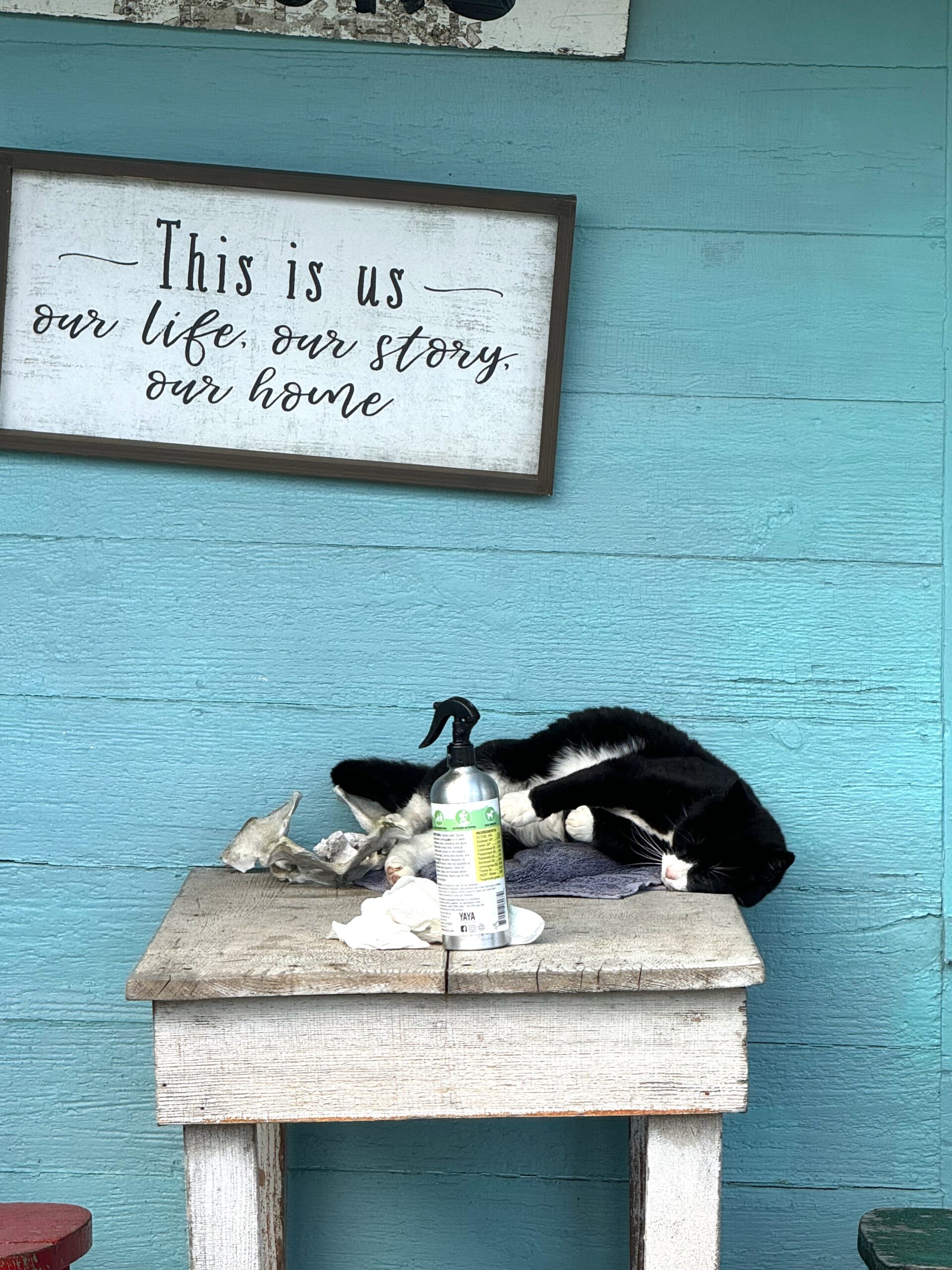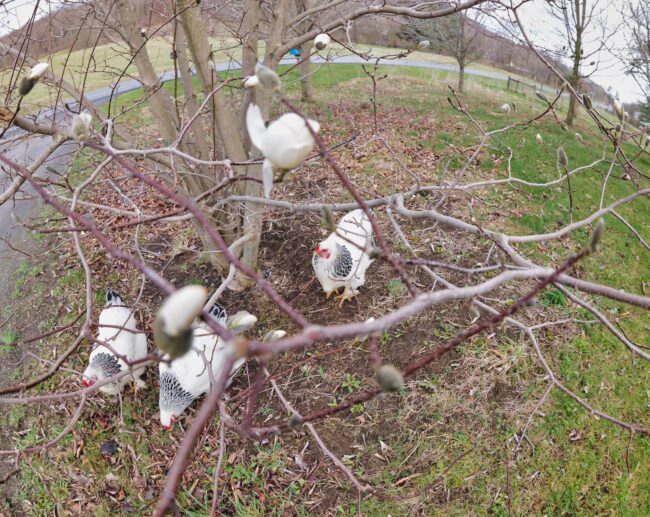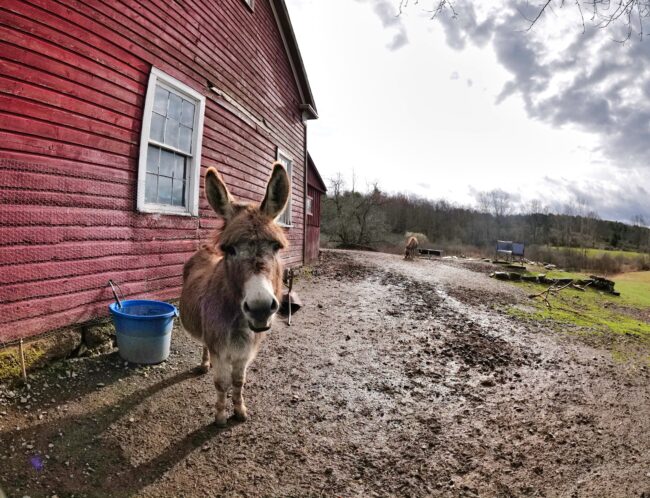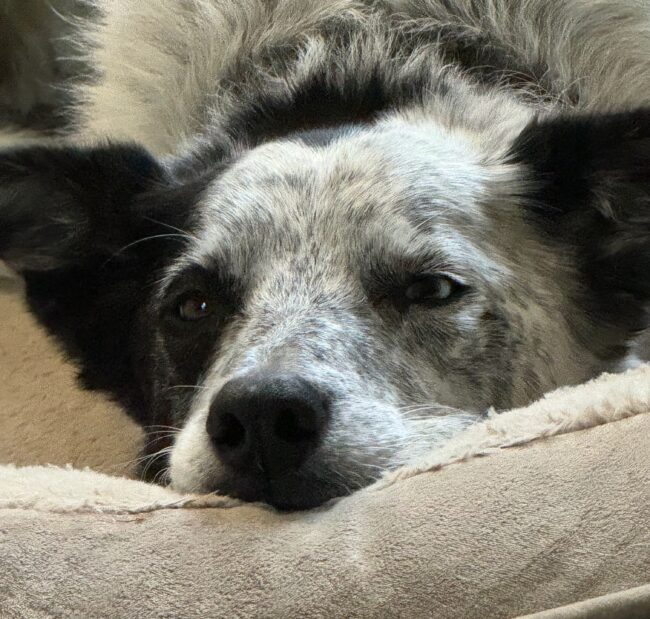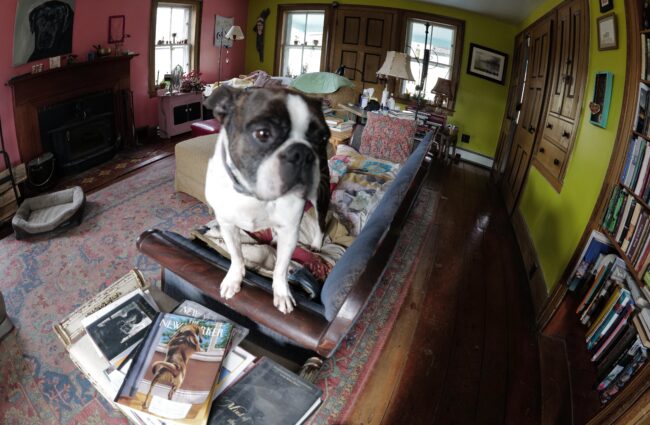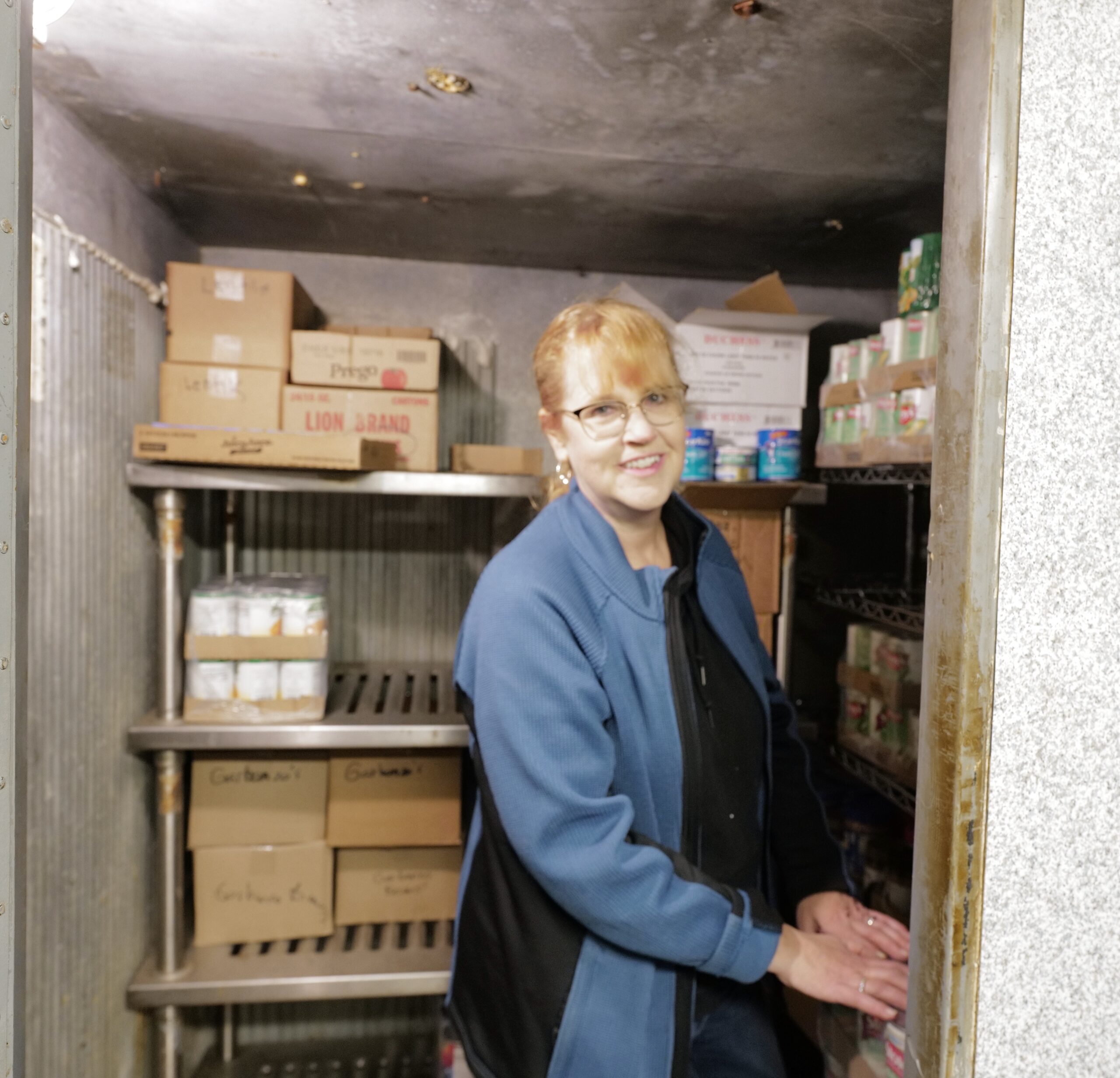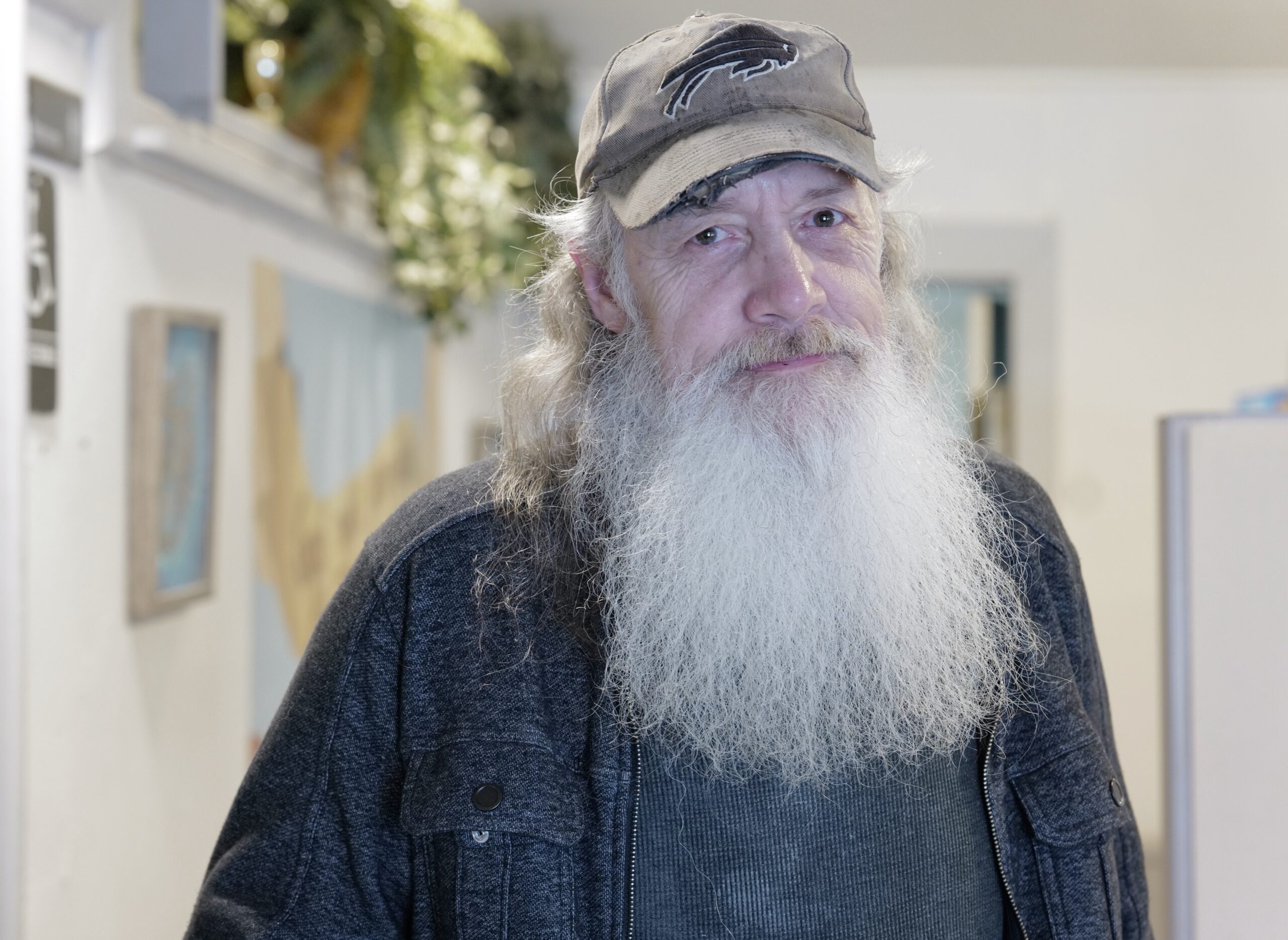This post is not about buying supplies; it’s about recognizing the complex, complete, and never-ending work that outsiders never see and rarely acknowledge. I am deeply touched by what I see. I’m talking about the volunteers.
It is powerful to see the real heroes of American life turning out daily to help their community and ensure the hungry have food. Equally touching are the members of the Army Of Good, who have sent thousands of pounds of food to the Cambridge food pantry from all over the country.
I wish I could take their photos, but I can’t. But this post is devoted to all of them, and I am honored to work with them.
The work is complex and involves constant communication, hauling, stacking, preparing, driving, collecting, cleaning, re-stocking, putting things in and taking them out, and then repeating the process. Some volunteers come to prepare meals.
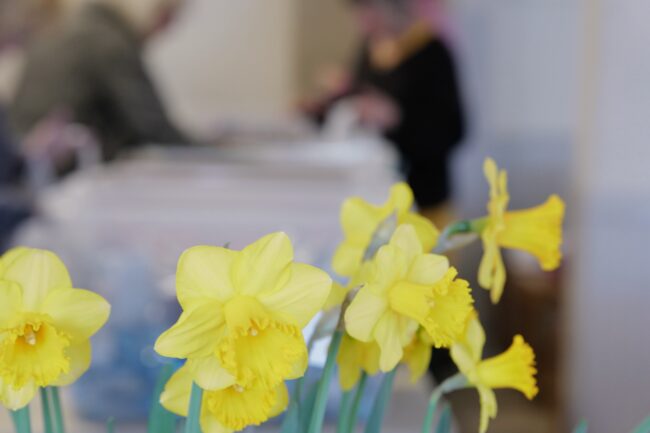
(Flowers donated to the food pantry by the Cambridge Flower Shop and our friend Sue Lamberti)
It is an impressive and uplifting sight to walk in there. I wanted to try with my photos to capture the feeling and commitment of these good people, all of whom permitted me to take their photos; I thank all of them for that, especially Harry, the caretaker in the image above.
He didn’t want to be photographed, but I wore him down, and he agreed to contribute by letting me take his picture. He is a kind and generous man.
It is a happy surprise to learn of the generous support the pantry is getting from the town, the Army of Good, local businesses and farmers, and most of all, from the dedicated, uncomplaining volunteers who have so much to do and do it so well. There is no complaining, tension, arguing, or grievance here. These are the people you will never see on the news but who carry the real spirit of community and of our country.
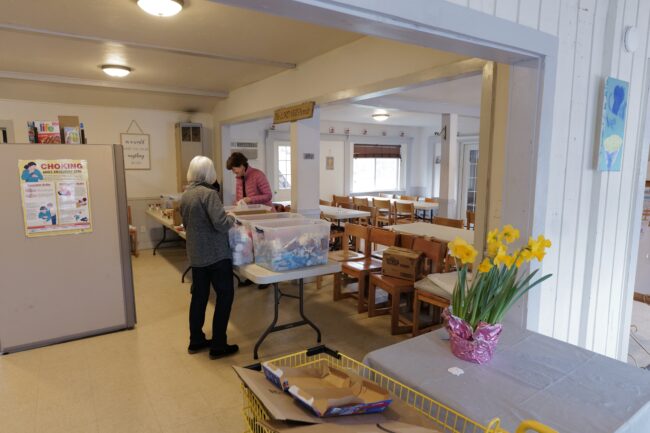
Everyone works quietly and continuously. They take it seriously and help each other. Volunteers are in every corner of the pantry, delivering food and donations, stocking shelves, and refilling plastic containers containing food for the children. (Above, getting ready to fill the food baskets of the children of the families who come to the pantry.
Sarah Harrington spends much of her life ordering food and figuring out what will be needed. I make it a point to track her down and take her photo when I’m there. She puts up with me.

Sarah (above) spends much of her time figuring out what to order and when. Everybody wonders how she can do it. I appreciate working with her.
I asked one of the volunteers why she was there, and she smiled and said, “When I was a kid, a snack was peanut butter on the edge of a spoon. I’m thrilled to help out…”
Another said, “Nobody cares about these people, down and out of their luck and struggling to feed their families. It is a gift to get food to children and their parents; it is a gift to me.”
I didn’t use names, as they work so efficiently together and are seldom praised. I’m sure I’ll get to it here. Here are the photos I took when Maria and I went to the pantry to volunteer to assemble packages for hungry children. It was beautiful to see these people work; they are the best of our country, its future, and its hope. They bristle with confidence, dedication, and compassion. They also work damned hard.
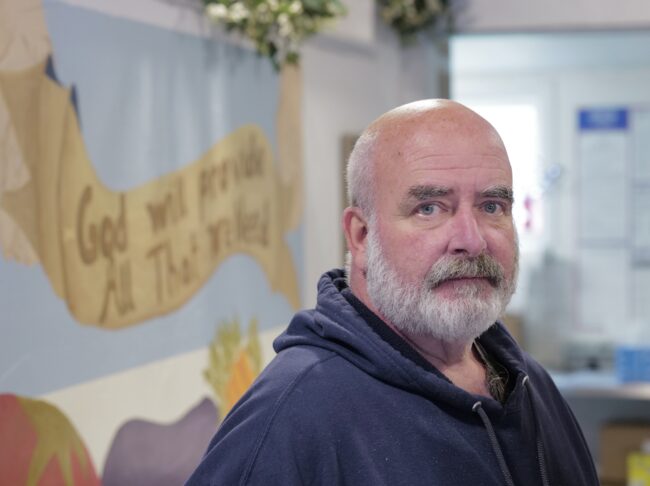
I’m impressed with Scott, who is often at the pantry and works hard to make it all work. He is the real deal.
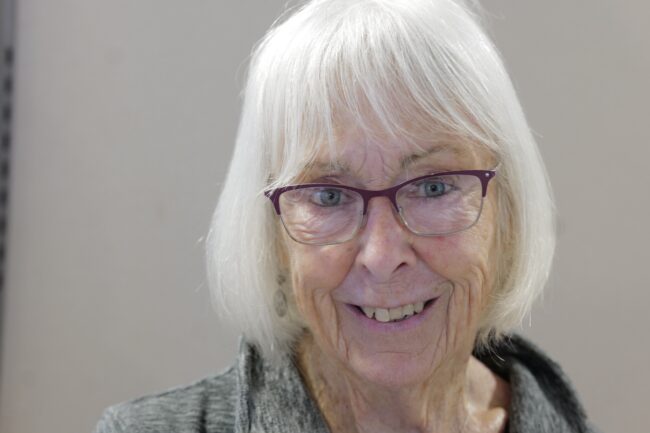
Joan is in charge of the Backpack program for children. She knows everything about it, including how many children get what kind of food. She constantly urges us to drop more snacks for the kids.
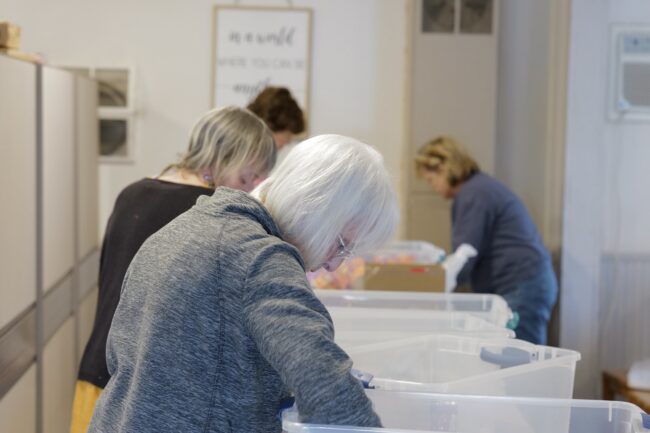
The work line, where volunteers line up to put the food for children into baskets and then stuff it into bags to go to their school, is quiet and continuous. The pantry is empty of competition, selfishness, and complaint, a startling contrast to the daily news we suffer.

This volunteer re-supplies the food on the shelves so that the families can choose what they need for their families. He knows where everything goes.

Once the day’s work is finished, Joan and the other volunteers prepare for next week.
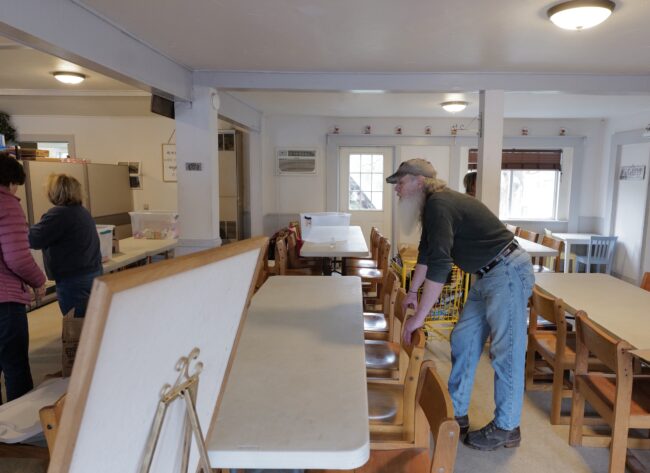
Harry lives on the grounds and is always there to help and clean up.
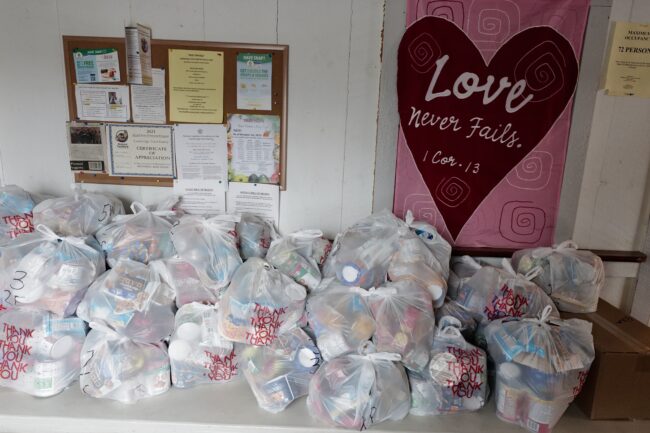
These are the backpacks full of soup, dinners, noodles, fruit, and candy for the 66 children in the central school. They get these packets every Thursday.
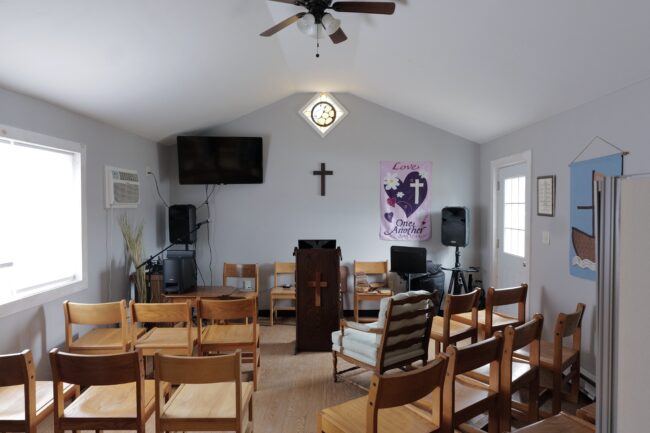
The pantry has religious roots. There is a lovely chapel at the southern end of the pantry where people can worship on Sunday if they wish. Religious affiliation is not required of the people who come for food. The families and visitors to the pantry are treated warmly and respectfully, and no questions are asked.




